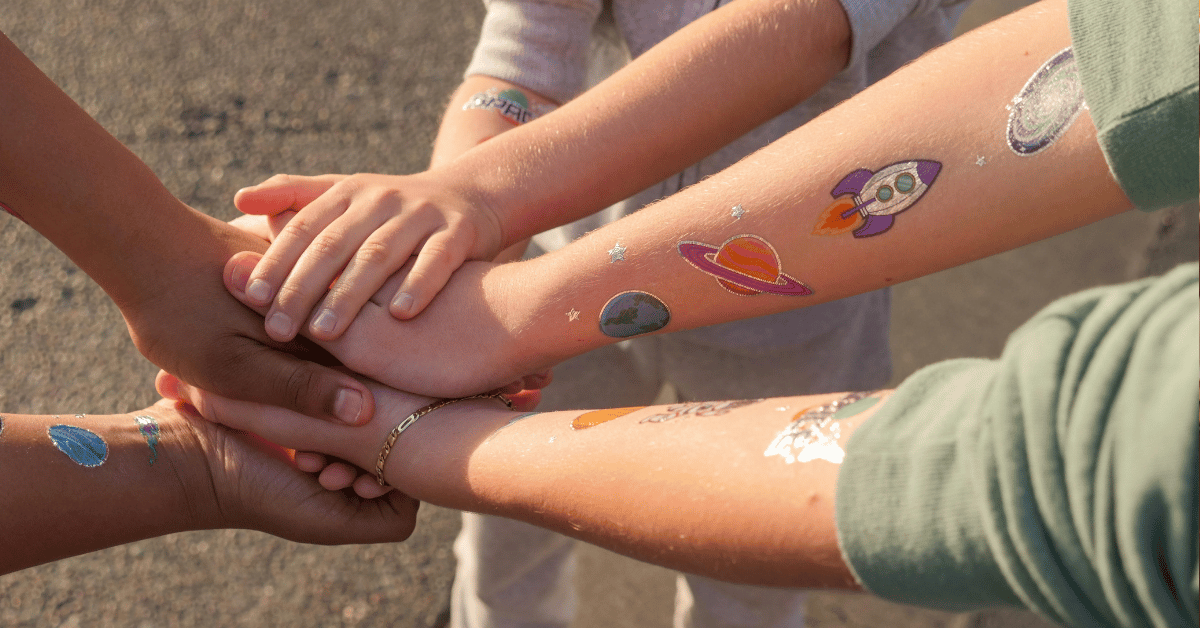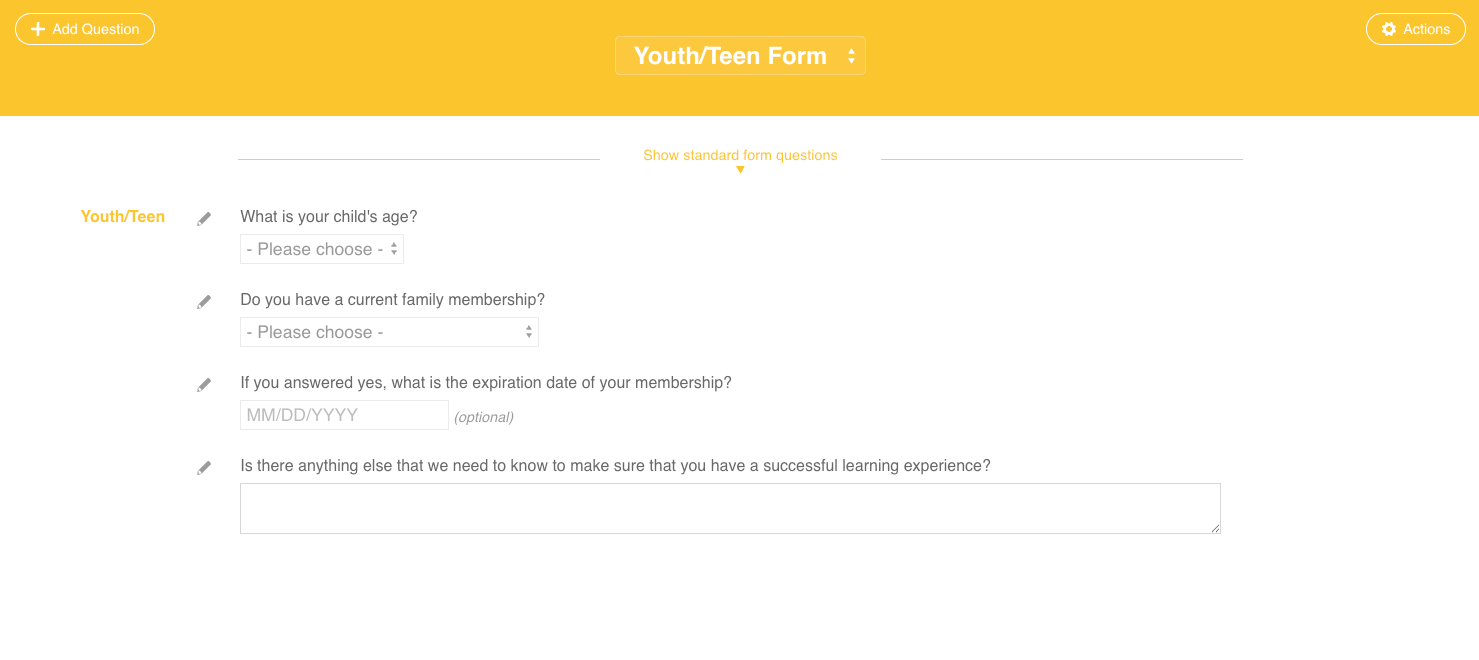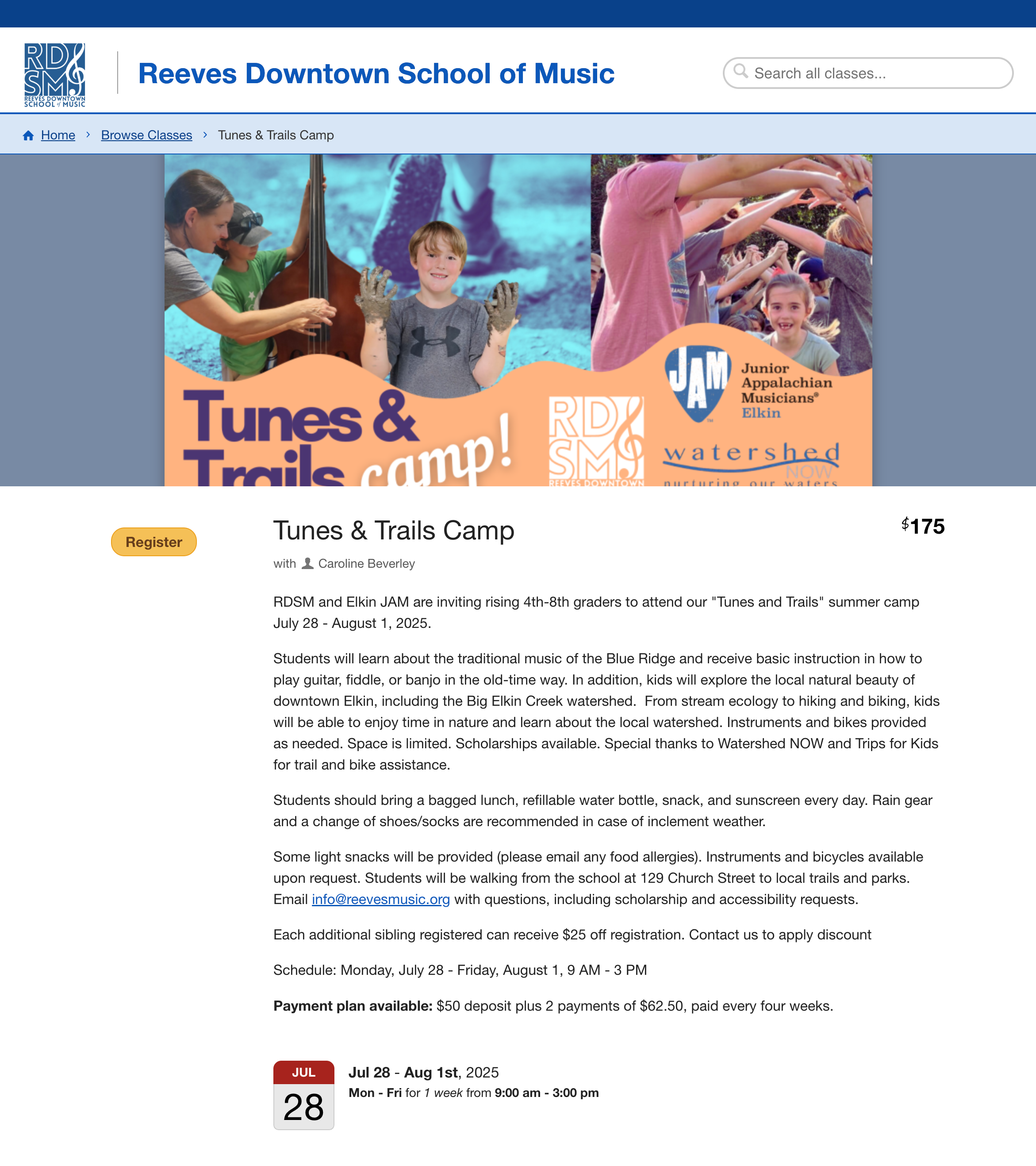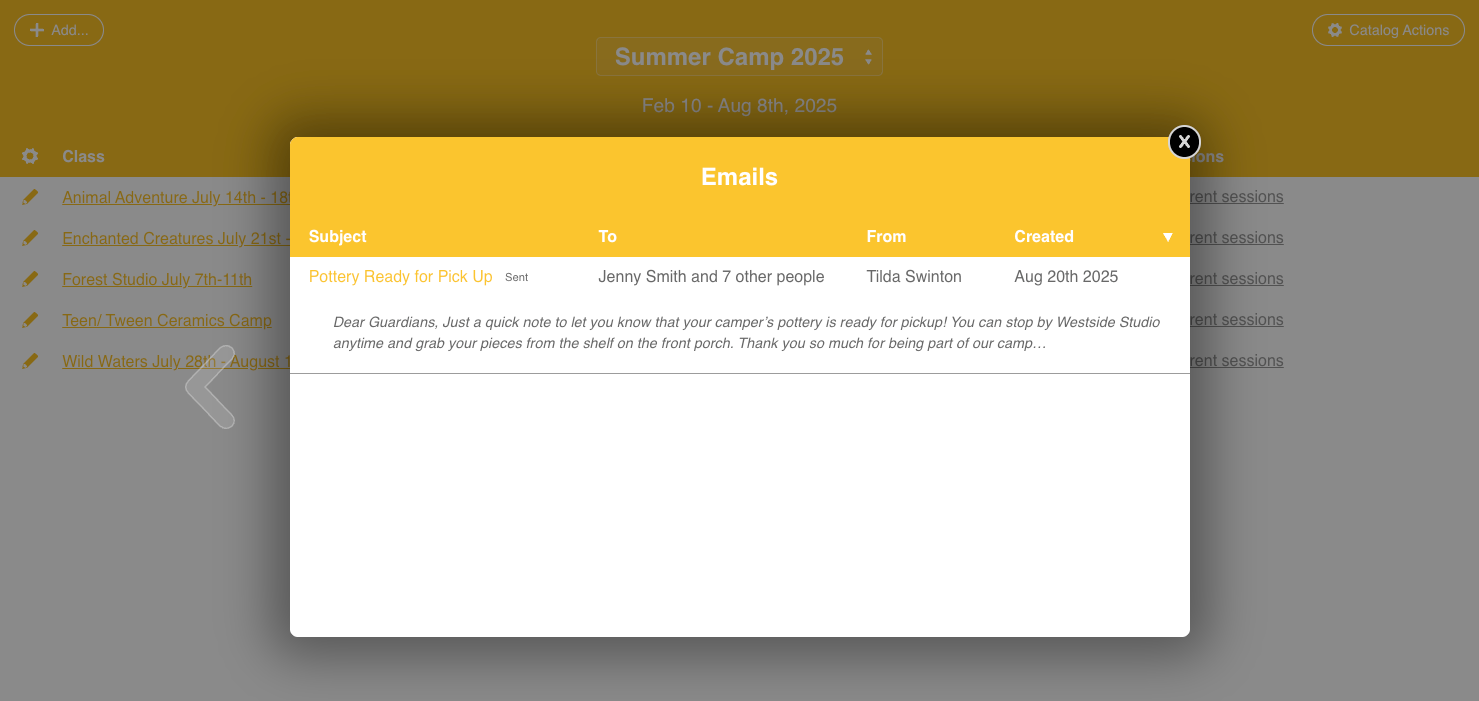5 Summer Camp Themes and Trends to Boost Signups in 2026



If your organization offers summer camps, you’re likely already elbows deep in planning summer camp themes and offerings for 2026. It can be tempting to run with what you’ve always done, but leading programs are looking to current trends and community expectations to build a summer camp catalog that truly delights.
Leading informal education programs are looking to current trends and community expectations to build a summer camp catalog that truly delights.
There’s a lot to juggle (budgets, schedules, registration, etc.) but also so many chances to surprise people. To give your community something they’ll talk about all summer.
The programs that really shine pay attention to what’s happening around them. They consider what kids are curious about, what parents need and want, and what feels true to this cultural moment. When camps reflect that energy, families can feel it. They sign up faster, share with friends, and keep coming back.
To support your planning for 2026, read on for five summer camp themes and trends that will give you a head start. Use them to shape your camps in ways that are authentic to you and the communities you serve.
Theme #1: Neuroinclusive design moves from nice-to-have to expected
Parents notice when a program makes space for every child. They appreciate when staff understand that kids learn and process the world in different ways.
That need keeps growing. The CDC estimates that about one in 31 U.S. children is on the autism spectrum, and many more live with ADHD, learning differences, or sensory sensitivities. A 2025 survey from the Boys & Girls Clubs of America found that 15% of parents have a child with special needs, and 59% report that it has been challenging to find inclusive summer camp programs.
Action plan:
- Add space on your registration form for sensory notes or communication preferences. (CourseStorm’s customizable digital forms make it simple to collect and store this info.)
- Use icons to show which camps offer “quiet spaces,” “visual schedules,” or “movement breaks.”
- Post a sample daily schedule on your socials and website (and share it in any email comms) so families know what to expect.
- Highlight staff training in inclusion and sensory awareness in your summer camp marketing if applicable.

A camp designed for all kinds of learners builds trust before they ever step through the door. Each small act of inclusion signals care and helps every camper feel they belong.
Theme #2: Reliability > everything: Flexible formats and earlier sign-ups
Working families are stretched thin, and summer logistics can make or break their routines. In a 2025 survey from Bright Horizons, 76% of parents said their ability to focus at work depends on the reliability of their children’s summer schedule. The Boys and Girls Club survey also revealed that transportation and timing issues are a barrier to enrollment for close to half (46%) of respondents.
Parents flock to the programs that make their lives easier. Extended hours or flexible payment plans can be the deciding factor. The earlier you share those details, the faster families commit.
Action plan:
- Offer early-bird registration perks and clearly display cancellation and refund policies.
- Offer multi-week registration options or promote “Workday-Friendly” camps with extended coverage.
- Share a simple visual that breaks down hours, drop-off times, and payment options.
- Use CourseStorm for camp registration to make signing up clear, simple, and quick for busy parents. Bonus tip! You can embed CourseStorm directly into your website so parents experience your look and fill with our simplified UX.
We wanted our students to be able to register online similar to an Amazon experience, quick, easy, user friendly, visually appealing and colorful. This is what CourseStorm offers. – Maria B., Education Program Manager on Capterra
In summer camp marketing, reliability builds trust. When your programs fit busy parents’ schedules and registration is as smooth as their morning coffee, signing up is a no-brainer.
Theme #3: Local inspiration goes a long way
Build your summer camp themes around what’s happening nearby or what makes your city or town unique to make your programs feel fresh and distinctive. It’s a way to connect your curriculum to the topics and places your families already care about.
The Reeves Downtown School of Music in Elkin North Carolina is a great example. Their summer camp offerings often marry local tradition with local ecology, not to mention the outdoor activities kids love. Their 2025 "Tunes & Trails" camp features traditional music of the Blue Ridge as well as exploration of the local watershed all while hiking and biking.

Action plan:
- Ask parents, teachers, and local partners what themes would resonate most this summer.
- Partner with nearby businesses, museums, or public spaces on community art pieces like murals or window displays.
- Highlight community impact stories in your newsletters and summer camp marketing to show how your programs give back to and revitalize your local area.
- Use CourseStorm’s simple catalog builder to show off what's unique about your camps without a lot of hassle.
Tying your offerings to your region shows people that your camps are made for them. It reminds families that art and community are interconnected, that they build on each other.
If you want to dive even deeper into how to tailor your offerings to your community, check out this blog post.
Theme #4: Nostalgia and 'newstalgia' make a comeback
As the saying goes, everything old is new again. Teens and parents alike are leaning into the early-2000s revival. A 2025 report from Horizon Media found that nostalgic content acts as “connective tissue” between generations. Eighty-four percent of respondents said they seek out nostalgic formats when looking for shared experiences.
For arts programs, that mix of past and present (sometimes called ‘newstalgia’) can be a goldmine for summer camp themes. Gen Alpha sees their parents’ pop culture as fresh again, blending it with their own playful, futuristic style.
What could that look like in practice? Think zine-making, remixing famous 2000s art projects, or themed camp weeks inspired by Y2K design and music.
Action plan:
- Brainstorm throwback themes that invite both kids and parents to join in.
- Share short, visual social posts to build excitement before camp starts.
- Mix analog and digital art techniques to create modern twists on retro inspiration.
- Feature these creative crossovers in your summer camp marketing to grab attention fast.
Newstalgia feels familiar and fresh at the same time. It bridges generations and gives families something to talk about long after camp ends.
Theme #5: Personalized experiences build trust
Families are used to experiences that feel tailored to them. Their food delivery app remembers favorite orders. Streaming platforms know what they’ll want to watch next. Even online retailers send reminders when an item is running low. Bringing a bit of that same personalization into your summer camp marketing and registration process can help your program stand out.
Research shows that consumers’ tolerance for friction keeps falling while their expectations for speed and service continue to rise.
In education, a Niche study found that nine in ten students are more likely to enroll when they receive relevant, personalized communication. Parents also notice and appreciate that level of care.
Action plan:
- Use registration forms to remember family details and preferences for next season.
- Segment your outreach (e.g., returning families, first-timers, siblings) to make your marketing more resonant.
- Send short, friendly check-ins that speak to each group’s needs.
- Automate the routine parts, like reminders and receipts, so you can personalize the rest. (CourseStorm’s saved profiles and automated emails make this easy.)

Personalization sets the tone for the kind of thoughtful, welcoming experience families can expect from your organization all summer, and beyond.
Bonus tip: How to manage high demand (without pulling out your hair)
High demand is a good problem to have, but it can still be stressful. Many camps are filling faster each year, leaving families frustrated when spots disappear. The Boys & Girls Clubs survey found that 56% of parents couldn’t get their child into their preferred program simply because it was full.
Preparation matters. Waitlists, flexible payment options, and clear communication help keep families engaged even when sessions sell out. Thoughtful planning can turn disappointment into anticipation rather than frustration.
Action plan:
- Set up automatic waitlists and email alerts for openings. (CourseStorm’s real-time availability and waitlist features make this seamless.)
- Offer payment plans to allow parents to sign their kids up right away without the pressure of making a full payment upfront.
- Explore partnerships with local businesses, schools, or community centers to expand capacity.
- Communicate early and often. Let families know what to expect if demand exceeds space.
High enrollment means your programs are resonating. With the right systems in place, you can manage growth gracefully and make sure no one feels left out of the fun.
Every season is an opportunity to learn, experiment, and reconnect with your community. The summer camp themes and ideas here are meant to spark that process. Pick one or two to start with, try them out, and see how families respond. This will allow you to build thriving programs that are more and more aligned with what your community needs most.
If you're looking to uplevel your summer camp signup experience, CourseStorm can help. Get your free demo today and learn more about how our software can save you precious hours during your busiest season!
Editor's note: This article was originally published in December 2024 but has been fully updated with fresh summer camp themes and trends to help your organization prepare for your 2026 season!
Save time and grow your impact with CourseStorm










